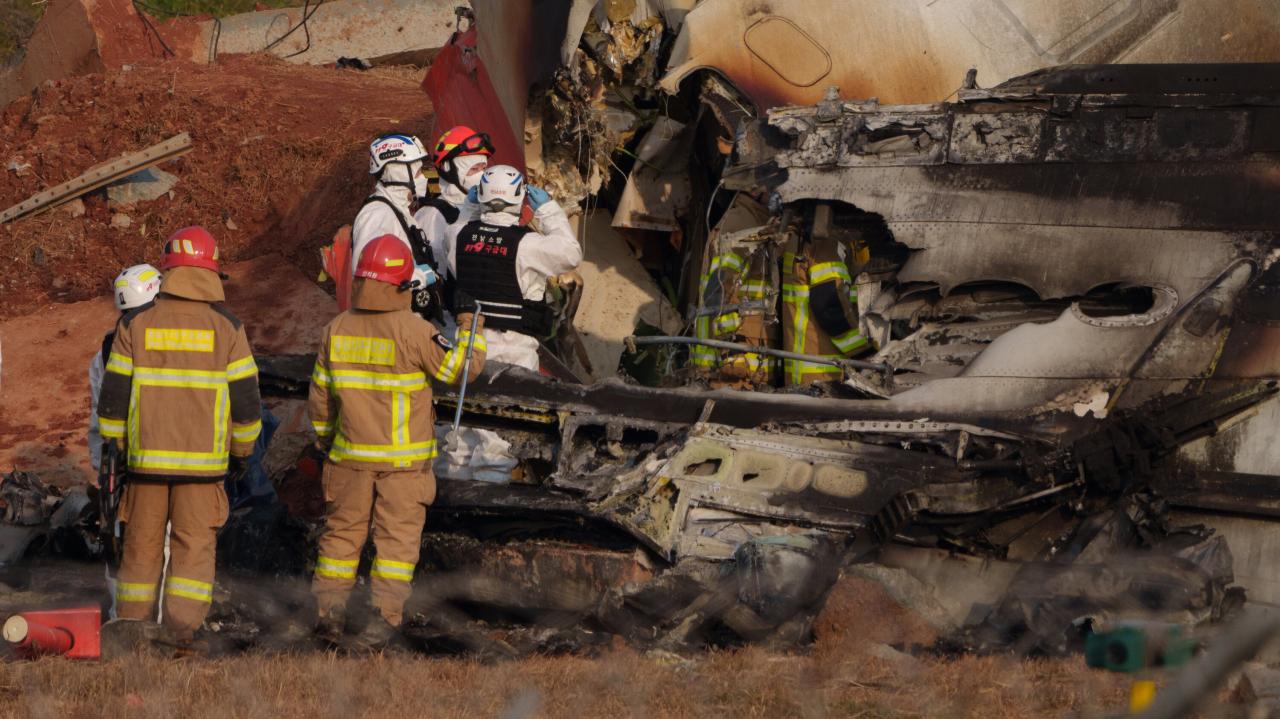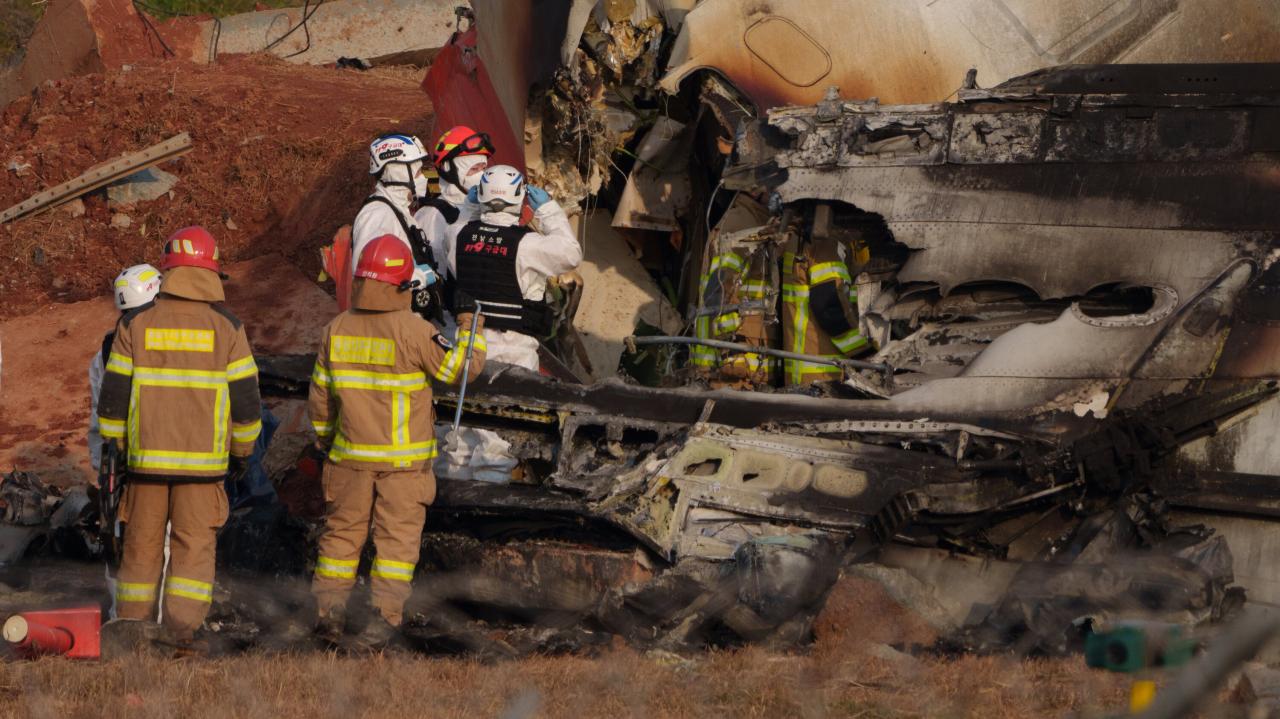Plane crash Korea: These words evoke a somber history, marked by both tragedy and progress. This exploration delves into the significant air accidents that have shaped Korea’s aviation landscape, examining their causes, consequences, and the lasting impact on safety regulations and public perception. We’ll investigate specific crashes, analyze media coverage, and explore the role of technological advancements and international collaboration in improving aviation safety.
From the historical context of earlier incidents to the detailed analysis of major crashes like Asiana Airlines Flight 214, we’ll uncover the lessons learned and the evolving safety measures implemented to prevent future tragedies. We’ll also examine how media portrayals have influenced public understanding and trust in air travel within Korea.
A History of Plane Crashes in Korea: Lessons Learned and Safety Advancements: Plane Crash Korea
Korea’s aviation history, like that of many nations, includes both significant advancements and tragic accidents. Understanding these events, their causes, and the resulting safety improvements provides crucial insights into the evolution of aviation safety, not just in Korea, but globally. This article examines key plane crashes in Korea, analyzing their impact on safety regulations, media coverage, and international collaboration.
Historical Context of Plane Crashes in Korea

Several significant plane crashes have shaped Korea’s aviation safety landscape. These incidents, spanning decades, involved various aircraft types and highlighted diverse contributing factors. Analyzing these events chronologically allows us to trace the evolution of safety measures and regulations.
| Date | Location | Aircraft Type | Casualties |
|---|---|---|---|
| [Insert Date] | [Insert Location] | [Insert Aircraft Type] | [Insert Number of Casualties] |
| [Insert Date] | [Insert Location] | [Insert Aircraft Type] | [Insert Number of Casualties] |
| [Insert Date] | [Insert Location] | [Insert Aircraft Type] | [Insert Number of Casualties] |
Analysis of Specific Korean Plane Crashes: Asiana Airlines Flight 214

The Asiana Airlines Flight 214 crash at San Francisco International Airport in 2013 serves as a prominent case study. The investigation revealed contributing factors including pilot error, inadequate crew resource management, and communication issues. The aftermath led to significant changes in pilot training, particularly focusing on approach procedures and automation management. The NTSB recommendations influenced global aviation safety practices.
| Feature | Asiana Airlines Flight 214 | [Another Significant Korean Aviation Accident] |
|---|---|---|
| Date | July 6, 2013 | [Insert Date] |
| Location | San Francisco International Airport | [Insert Location] |
| Aircraft Type | Boeing 777-200ER | [Insert Aircraft Type] |
| Primary Cause | Pilot error, inadequate crew resource management | [Insert Primary Cause] |
| Casualties | 3 deaths, numerous injuries | [Insert Number of Casualties] |
Impact on Aviation Safety Regulations in Korea
Major plane crashes have prompted significant changes in Korean aviation safety regulations. These changes involve enhanced pilot training programs, stricter maintenance protocols, and the implementation of new technologies. The Korean government’s aviation safety agencies play a crucial role in overseeing these regulations and ensuring their effective enforcement.
The recent plane crash in Korea highlights the fragility of life, reminding us how quickly things can change. It’s a stark contrast to the high-stakes competition and controlled environment of the canada latvia game , where strategy and skill are paramount. Thinking about the plane crash in Korea again, it’s a sobering reminder of the unexpected events that can shape our world.
- Enhanced pilot training programs focusing on automation management and crew resource management.
- Stricter maintenance protocols and inspections for aircraft.
- Implementation of new technologies for air traffic control and flight monitoring.
- Improved communication protocols between air traffic control and pilots.
Media Coverage and Public Perception of Air Travel Safety

Media coverage of plane crashes in Korea has evolved over time. Early reporting often focused on the immediate aftermath and casualty numbers, while more recent coverage includes in-depth investigations and analyses of contributing factors. This shift has influenced public perception, leading to greater awareness of aviation safety issues and increased scrutiny of regulatory bodies.
Okay, so you’re looking into plane crashes in Korea, right? That’s heavy stuff. To lighten the mood a bit (seriously, take a break if you need to!), think about the stark contrast to the high-stakes games in the show young mi squid game ; the desperation there is intense, but in a fictional way. Returning to the plane crash topic, remember to always cross-reference your sources when researching such sensitive events.
| Crash | Media Focus | Public Perception Impact |
|---|---|---|
| [Crash 1] | [Description of media coverage] | [Impact on public perception] |
| [Crash 2] | [Description of media coverage] | [Impact on public perception] |
Technological Advancements and their Role in Preventing Crashes
Technological advancements have significantly improved aviation safety. Modern aircraft are equipped with sophisticated safety systems, including advanced flight control systems, improved navigation aids, and collision avoidance technology. Flight data recorders (black boxes) provide invaluable data for accident investigations, allowing for a more thorough understanding of the events leading up to a crash.
Improved weather forecasting systems allow for better flight planning and risk mitigation.
A modern aircraft’s safety systems can be visualized as a layered approach. The first layer includes basic flight controls and instruments, ensuring basic aircraft maneuverability and awareness of its position. The second layer encompasses automated systems such as flight management computers and autopilot, enhancing precision and reducing pilot workload. The third layer consists of advanced safety systems such as terrain awareness and warning systems (TAWS) and traffic collision avoidance systems (TCAS), providing alerts and warnings to prevent accidents.
Finally, the fourth layer includes redundant systems and backups to ensure safety even in the event of component failure.
International Collaboration and Lessons Learned, Plane crash korea
International organizations, such as the International Civil Aviation Organization (ICAO), play a vital role in investigating accidents and establishing global safety standards. Lessons learned from Korean plane crashes have contributed to international best practices, influencing pilot training, maintenance procedures, and regulatory frameworks worldwide. This collaboration ensures consistent safety standards across nations and helps prevent similar accidents from occurring elsewhere.
Comparing Korea’s safety regulations with those of other developed nations reveals areas of both convergence and divergence. While many standards are aligned internationally through ICAO guidelines, specific implementation and enforcement may vary. International collaboration has significantly improved aircraft maintenance standards by promoting standardized procedures and inspections, and has also enhanced pilot training through the sharing of best practices and advanced simulation techniques.
Wrap-Up
The story of plane crashes in Korea is a complex narrative of loss, investigation, and continuous improvement. Through rigorous analysis of past events, coupled with technological advancements and international cooperation, significant strides have been made in enhancing aviation safety. While the memory of past tragedies remains, the pursuit of safer skies continues, driven by a commitment to learning from mistakes and implementing robust preventative measures.
The legacy of these events underscores the importance of ongoing vigilance and innovation within the aviation industry.
Quick FAQs
What is the deadliest plane crash in Korean history?
Thinking about air accidents? Plane crashes are sadly a part of aviation history, and understanding them is crucial for safety improvements. If you want to learn more about a specific incident, check out the details on this site regarding a past plane crash korea which highlights the complexities involved. Studying these events helps us prevent future tragedies, making air travel safer for everyone.
Plane crash investigations often reveal important lessons.
Determining the single deadliest is complex due to varying reporting across time. Researching historical records is crucial for a definitive answer.
How does Korean air safety compare to other developed nations?
Korea’s aviation safety record has improved significantly, but comparisons require a nuanced look at various factors like air traffic volume and regulatory enforcement, benchmarking against international standards.
What role does pilot training play in preventing crashes?
Pilot training is paramount. Rigorous programs focusing on emergency procedures, human factors, and technological proficiency are vital to minimizing risks.
What are the long-term psychological effects on survivors of plane crashes?
Survivors often experience PTSD, anxiety, and other lasting psychological impacts. Access to mental health support is crucial for recovery.
